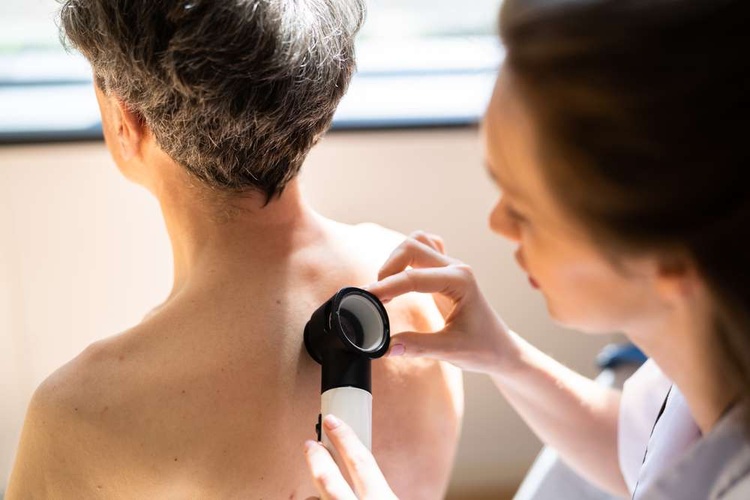Understanding Laser Treatment for Spider Veins: A Comprehensive Guide
Laser therapy is one option for addressing spider veins (telangiectasias). It works by using targeted light energy to collapse visible blood vessels under the skin. Learn more about how the treatment works, possible side effects, and expected recovery time.

How does laser therapy work for spider veins?
Laser therapy for spider veins utilizes concentrated light energy to target and destroy the visible blood vessels beneath the skin’s surface. The laser emits a specific wavelength of light that is absorbed by the hemoglobin in the blood within the affected veins. This absorption causes the blood to heat up, which damages the vein walls and ultimately leads to their collapse. Over time, the treated veins are reabsorbed by the body, and blood flow is redirected to healthier veins deeper beneath the skin.
What types of lasers are used for spider vein removal?
Several types of lasers can be used for spider vein treatment, each with its own advantages:
-
Pulsed Dye Lasers (PDL): These lasers are particularly effective for smaller, superficial spider veins and are often used on the face.
-
Nd:YAG Lasers: These are better suited for deeper or larger spider veins and can be effective on a wider range of skin types.
-
Intense Pulsed Light (IPL): While not technically a laser, IPL devices use broad-spectrum light to treat spider veins and are often effective for larger areas.
The choice of laser depends on factors such as the size and depth of the veins, the patient’s skin type, and the treatment area.
What are the benefits of laser spider vein removal?
Laser treatment for spider veins offers several advantages:
-
Non-invasive: Unlike surgical methods, laser therapy doesn’t require incisions or injections.
-
Precision: Lasers can target specific veins without damaging surrounding tissue.
-
Quick treatment: Sessions typically last 15-30 minutes, depending on the treatment area.
-
Minimal downtime: Most patients can return to normal activities immediately after treatment.
-
Effectiveness: Many patients see significant improvement after just one or two sessions.
-
Versatility: Lasers can treat spider veins on various body parts, including the face, legs, and chest.
Are there any side effects or risks associated with laser vein treatment?
While laser treatment for spider veins is generally considered safe, there are some potential side effects and risks to be aware of:
-
Temporary redness or swelling in the treated area
-
Mild bruising that typically resolves within a week
-
Changes in skin pigmentation, which are usually temporary
-
Rare cases of blistering or scarring
-
Potential for burns if the laser is not used correctly
It’s crucial to choose a qualified and experienced practitioner to minimize these risks. Additionally, some patients may experience mild discomfort during the procedure, often described as a snapping sensation against the skin.
What should patients expect during recovery?
Recovery from laser spider vein treatment is typically quick and straightforward. Most patients can resume their normal activities immediately after the procedure. However, there are some post-treatment care instructions to follow:
-
Avoid sun exposure and use sunscreen on treated areas
-
Refrain from hot baths, saunas, or strenuous exercise for 24-48 hours
-
Wear compression stockings if recommended by your practitioner
-
Apply cool compresses to reduce any swelling or discomfort
-
Follow any specific aftercare instructions provided by your healthcare provider
It’s important to note that while some immediate improvements may be visible, the full results of the treatment can take several weeks to become apparent as the body gradually absorbs the treated veins.
How much does laser spider vein removal cost?
The cost of laser spider vein removal can vary significantly based on factors such as the size of the treatment area, the number of sessions required, and the geographic location of the practice. Here’s a general overview of pricing:
| Treatment Area | Average Cost per Session | Typical Number of Sessions |
|---|---|---|
| Small Area | $200 - $400 | 1-3 |
| Medium Area | $400 - $700 | 2-4 |
| Large Area | $700 - $1,200 | 3-5 |
Prices, rates, or cost estimates mentioned in this article are based on the latest available information but may change over time. Independent research is advised before making financial decisions.
It’s important to note that laser spider vein treatment is typically considered a cosmetic procedure and is not usually covered by health insurance. Some practices may offer package deals for multiple sessions, which can provide cost savings. During a consultation, a healthcare provider can give a more accurate estimate based on individual needs and treatment plans.
In conclusion, laser therapy offers a safe, effective, and non-invasive option for treating spider veins. While it may require multiple sessions for optimal results, many patients find the treatment to be well worth the investment in terms of improved appearance and confidence. As with any medical procedure, it’s essential to consult with a qualified professional to determine if laser spider vein removal is the right choice for your individual situation.
This article is for informational purposes only and should not be considered medical advice. Please consult a qualified healthcare professional for personalized guidance and treatment.




